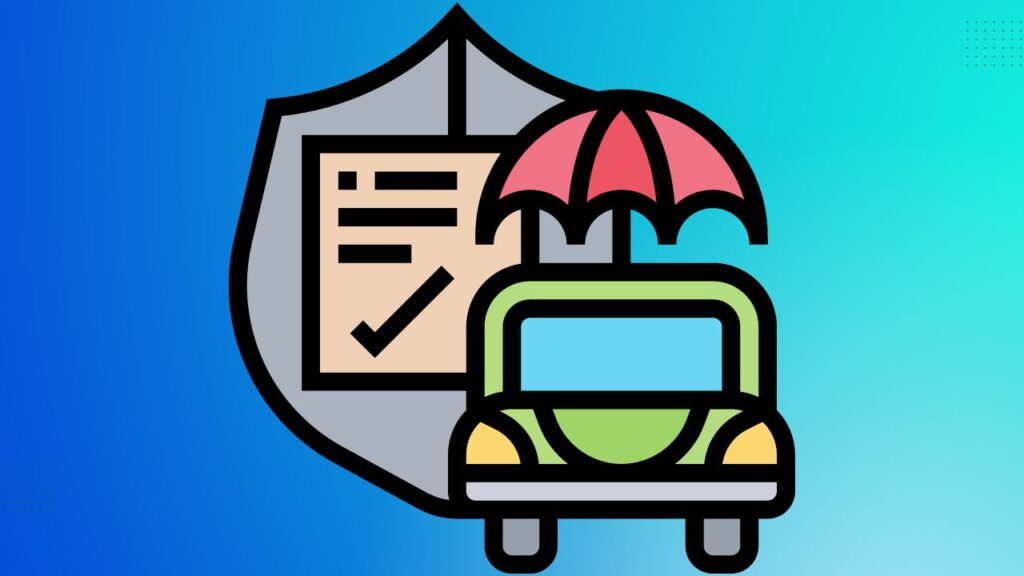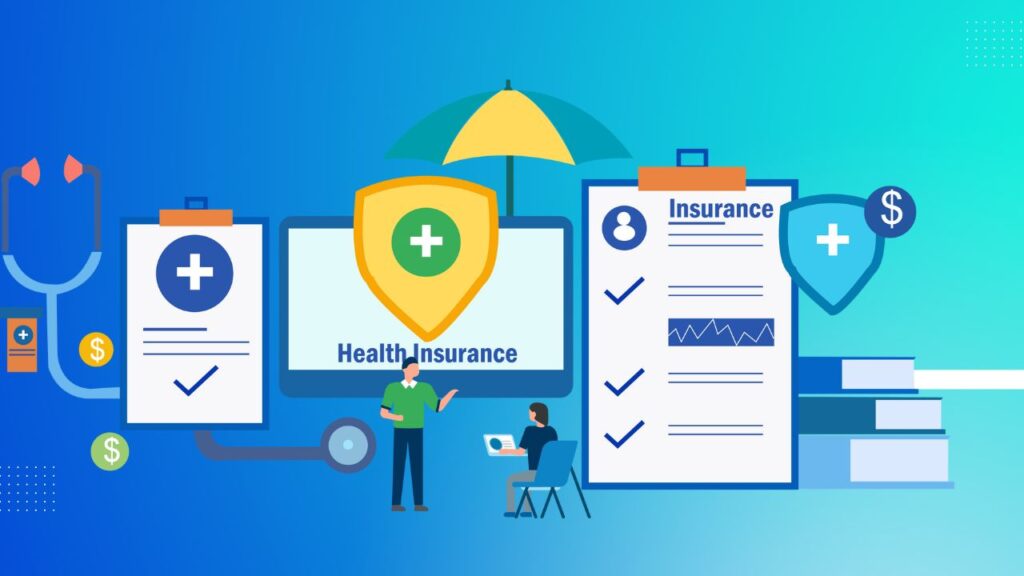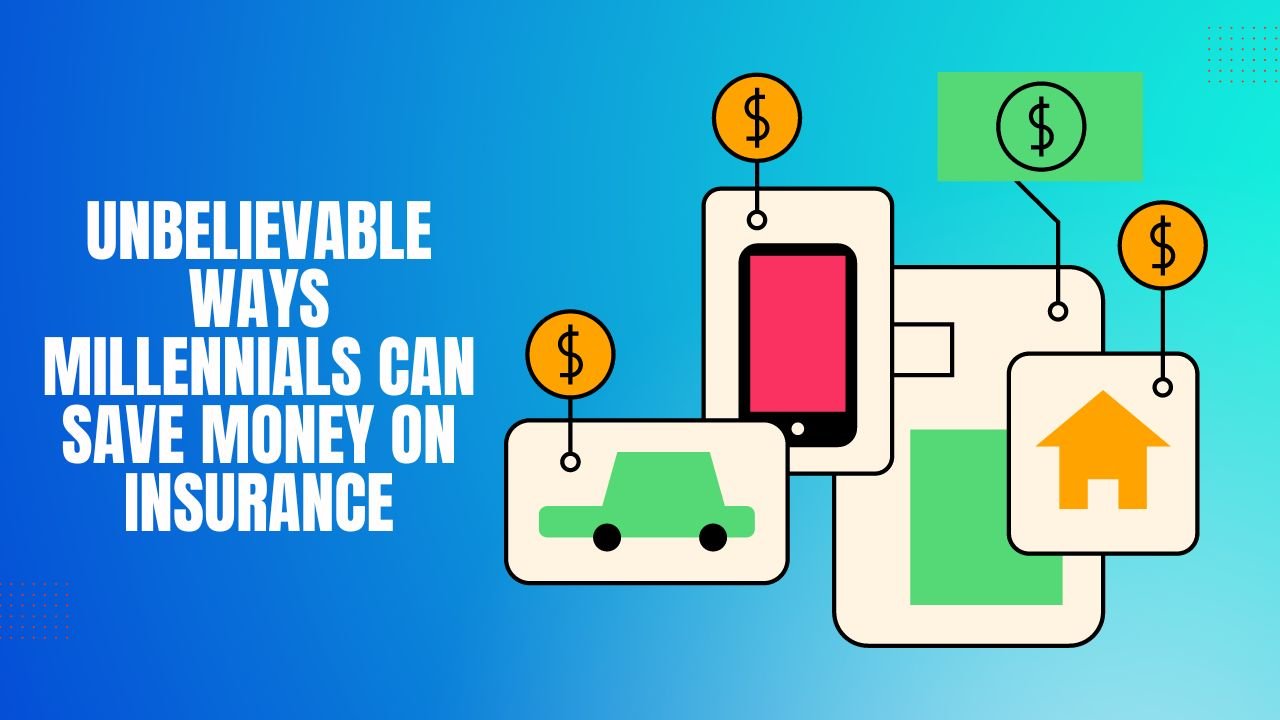Let’s dive into a topic that’s near and dear to our wallets: insurance.
Now, I know what you’re thinking: insurance can be a real drain on our hard-earned cash, but fear not!
I’m here to share some mind-blowing strategies that will help us save money on insurance like never before.
Did you know that insurance costs are on the rise, with millennials often paying the highest premiums?
According to recent studies, the average annual cost of auto insurance for millennials has increased by a staggering 77% in the last decade. Yikes!
But fret not, because I’ve done my research and uncovered some truly unbelievable ways to tackle this financial challenge head-on.
You can save money on insurance by shopping around for the best rates, considering higher deductibles, bundling multiple policies with the same provider, maintaining a good credit score, and taking advantage of any available discounts or rewards programs offered by insurance companies. Additionally, practicing safe habits, such as maintaining a clean driving record, installing security systems for home insurance, and living a healthy lifestyle for health insurance, can help lower insurance premiums in the long run.
Whether it’s car insurance, health insurance, or even renter’s insurance, I’ve got the insider tips and tricks to help us slash those premiums and keep more money in our pockets.
From leveraging the power of technology to finding the best deals through comparison shopping, we’re about to revolutionize the way we approach insurance.
Now, I won’t keep you waiting any longer. Grab your favorite beverage, get comfortable, and get ready to discover these game-changing strategies that will revolutionize your approach to insurance and save you a boatload of cash.
Trust me, you won’t want to miss this. Let’s do this!
1. Insurance Costs for Millennials

1.1 Factors That Influence Insurance Premiums for Millennials
Here are some key factors to consider:
1. Age and Driving Experience:
Younger millennials tend to pay higher auto insurance premiums due to their limited driving experience.
According to the Insurance Institute for Highway Safety, drivers aged 20-24 have the highest crash rate per mile driven.
2. Type of Coverage
The level of coverage you choose greatly affects your insurance costs.
Comprehensive coverage that protects against theft, vandalism, and natural disasters typically comes with a higher price tag.
3. Vehicle Type and Safety Features
The type of car you drive impacts your insurance rates.
Sporty or high-performance vehicles tend to have higher premiums due to their increased risk of accidents.
On the other hand, cars equipped with advanced safety features may qualify for discounts.
4. Driving Record
Your driving history plays a significant role in determining insurance costs.
Traffic violations, accidents, and previous claims can increase your premiums.
5. Location
Your geographic location influences insurance costs.
Urban areas often have higher rates due to increased traffic congestion and theft risks.
6. Credit Score
Surprisingly, your credit score can impact your insurance premiums.
Studies have shown a correlation between lower credit scores and increased claims.
1.2 Common Challenges Faced by Millennials in Securing Affordable Insurance
1. Financial Constraints
Many of us are burdened with student loan debt and face financial challenges, making it difficult to afford higher insurance premiums.
2. Lack of Insurance Knowledge
Insurance can be complex and overwhelming, and many millennials may not fully understand the coverage they need or the factors influencing premiums.
3. Limited Work History
People who are just starting their careers may not have a stable work history or a high income, which can affect their eligibility for lower insurance rates.
4. Distracted Driving
With the rise of smartphones and technology, distracted driving has become a prevalent issue.
Increased accidents and violations can lead to higher premiums.
5. Limited Access to Employer Benefits
Unlike previous generations, youngsters may face challenges in accessing affordable insurance through their employers, as many companies are moving away from offering comprehensive benefits packages.
2. Unbelievable Ways Millennials Can Save on Car Insurance

2.1 Taking Advantage of Safe Driving Discounts
2.1.1 Maintaining a clean driving record
Did you know that maintaining a clean driving record can lead to lower insurance premiums?
Avoiding accidents and traffic violations can help you qualify for safe driving discounts.
2.1.2 Completing defensive driving courses
Consider enrolling in defensive driving courses.
These courses not only make you a safer driver but can also earn you valuable discounts on your car insurance.
2.2 Exploring Usage-Based Insurance Options
2.2.1 Installing telematics devices for monitoring driving habits
Embrace technology and install telematics devices in your car.
These devices track your driving habits, such as speed, mileage, and braking patterns, and can potentially lead to significant discounts if you’re a safe driver.
2.2.2 Considering pay-per-mile insurance policies
If you’re not a frequent driver, pay-per-mile insurance policies might be a perfect fit for you.
With these policies, you only pay for the miles you drive, which can result in substantial savings.
2.3 Utilizing Car Insurance Bundling Opportunities
2.3.1 Exploring discounts for combining auto and renter’s insurance
Have renter’s insurance? Consider bundling it with your auto insurance.
Many insurance providers offer discounts when you combine multiple policies, such as auto and renter’s insurance, saving you some serious dough.
2.3.2 Assessing multi-car insurance policies for families or roommates
If you’re part of a family or have roommates with cars, explore multi-car insurance policies.
These policies cover multiple vehicles under a single plan, often resulting in lower premiums compared to individual policies.
3. Money-Saving Strategies for Home Insurance for Millennial Homeowners

3.1 Increasing Home Security Measures
3.1.1 Installing burglar alarms and security systems
Did you know that installing burglar alarms and security systems can lower your home insurance premiums?
These security measures significantly reduce the risk of theft and vandalism, making your home less of an insurance liability.
3.1.2 Enhancing door and window locks
Upgrading your door and window locks is another fantastic way to improve home security and potentially lower your premiums.
Stronger locks make it harder for intruders to gain access to your home, reducing the insurance company’s risk.
3.2 Raising Deductibles and Adjusting Coverage
3.2.1 Assessing the appropriate coverage levels for personal belongings
Take a close look at the coverage you have for your personal belongings.
Make sure you’re not overinsured and adjust your coverage to accurately reflect the value of your possessions.
3.2.2 Considering higher deductibles to lower premiums
Increasing your deductible is a clever way to save money on your home insurance.
By opting for a higher deductible, you’re taking on more financial responsibility in case of a claim, but your premiums will typically decrease.
3.3 Exploring Home Insurance Discounts
3.3.1 Researching discounts for safety features like smoke detectors and fire extinguishers
Safety features like smoke detectors, fire extinguishers, and even sprinkler systems can earn you substantial discounts on your home insurance.
These measures greatly reduce the risk of fire-related damage to your property.
3.3.2 Inquiring about loyalty discounts for long-term policyholders
If you’ve been a loyal policyholder with the same insurance company, it’s worth asking about loyalty discounts.
Many insurers offer special perks and discounts to reward their long-term customers.
4. Affordable Health Insurance Options for Millennials

Healthcare costs can be quite daunting, but there are ways to navigate the system and find options that won’t break the bank. Let’s dive right into it!
4.1 Understanding Health Insurance Terminology and Options
When it comes to health insurance, it’s crucial to understand the different terms thrown around.
Let’s break it down:
- HMOs (Health Maintenance Organizations): These plans typically have lower premiums but require you to choose a primary care physician and get referrals to see specialists.
- PPOs (Preferred Provider Organizations): These plans offer more flexibility, allowing you to see any doctor or specialist without a referral, but they usually come with higher premiums.
- High-deductible plans: These plans have lower premiums but higher deductibles, meaning you’ll have to pay more out of pocket before insurance coverage kicks in.
4.1.1 Now, let’s talk about where to find these insurance options
- Health insurance marketplaces: You can explore government-run marketplaces like healthcare.gov, where you can compare and purchase insurance plans that suit your needs.
- Private options: Some private companies offer health insurance plans specifically tailored for freelancers and gig workers. Researching these options can help you find competitive rates.
4.2 Evaluating Health Savings Accounts (HSAs)
HSAs can be a game-changer for saving money on healthcare costs.
Here’s why:
- Tax advantages: Contributions to HSAs are tax-deductible, meaning you can lower your taxable income. Additionally, any growth or withdrawals used for qualified medical expenses are tax-free.
- Flexibility: HSAs allow you to save for future medical expenses, and the funds roll over from year to year. This flexibility gives you more control over your healthcare spending.
4.2.1 Consider the long-term benefits of HSAs
- Savings potential: HSAs can be a powerful tool for building a nest egg for retirement. As long as you use the funds for medical expenses, the growth of your HSA can continue to grow tax-free.
- Control over healthcare decisions: With an HSA, you have more control over your healthcare choices, as you can use the funds to pay for qualified medical expenses on your terms.
4.3 Joining Professional Associations for Group Insurance Rates
Professional associations can offer a gateway to group insurance rates, which can be more affordable and provide better coverage.
Here’s what you should do:
- Research professional organizations: Look for associations related to your industry that offer health insurance benefits to their members. These organizations often negotiate group rates that can save you money.
- Assess eligibility and coverage options: Once you’ve identified potential associations, check their eligibility requirements and the coverage options they provide. Make sure the benefits align with your healthcare needs.
Let me summarize all this information in a handy table:
| Insurance Option | Key Features |
| HMOs | Lower premiums, require primary care physician and referrals |
| PPOs | More flexibility, no need for referrals, but higher premiums |
| High-deductible plans | Lower premiums, higher deductibles, more out-of-pocket costs |
| Health insurance marketplaces | Government-run platforms to compare and purchase insurance plans |
| Private options | Tailored plans for freelancers and gig workers, competitive rates |
| HSAs | Tax advantages, flexibility, long-term savings potential |
| Professional associations | Group insurance rates, better coverage, industry-specific benefits |
5. Saving on Insurance for Millennials Renting Apartments or Homes

It’s essential to protect our belongings and ourselves without breaking the bank.
So, let’s dive into the details!
5.1 Understanding Renters Insurance Coverage
It’s crucial to protect our personal belongings.
Here’s why:
- Renters insurance covers the cost of replacing or repairing our belongings in case of theft, fire, or other covered events.
- It provides liability coverage, which protects us if someone gets injured in our rented space and files a lawsuit against us.
- Additional living expenses coverage helps with temporary accommodation if our rented space becomes uninhabitable due to covered events.
5.2 Assessing Coverage Needs and Comparing Quotes
To get accurate coverage, we need to evaluate the value of our personal possessions.
Here’s what you should consider:
- Make a detailed inventory of your belongings and estimate their value. This will help you determine the coverage amount you need.
- Take into account high-value items like electronics, jewelry, or collectibles that may require additional coverage or a separate policy.
5.2.1 Requesting quotes from multiple insurance providers is crucial for finding the best deal
Reach out to different insurance companies and request quotes for renters insurance. This allows you to compare rates, coverage options, and deductibles.
Don’t forget to inquire about any available discounts, such as bundling policies or installing safety features in your rented space.
5.3 Exploring Roommate Insurance Options
If you have roommates, you can consider joint policies for shared coverage.
Joint policies allow roommates to be covered under the same renters insurance policy, potentially saving money compared to separate policies.
Make sure to discuss and agree on how to split the premium costs and understand the shared liability.
5.3.1 Assess individual policies for separate coverage
If you prefer to have individual coverage, each roommate can obtain their own renters insurance policy.
Individual policies ensure that each person’s belongings and liability are protected separately.
Let me summarize all this goodness in a neat little table:
| Insurance Option | Key Features |
| Renters Insurance | Protects personal belongings, provides liability coverage, covers additional living expenses |
| Assessing Coverage Needs | Evaluate the value of belongings for accurate coverage, consider high-value items |
| Comparing Quotes | Request quotes from multiple insurance providers, compare rates, coverage options, and deductibles |
| Roommate Insurance Options | Joint policies for shared coverage, split premium costs; individual policies for separate coverage |
Bottom Line…
In conclusion, if you’re a millennial looking to save money on insurance, you’re in luck!
There are some truly unbelievable ways to cut those costs without sacrificing coverage.
By shopping around and comparing quotes, you can save an average of 29% on your car insurance alone.
And don’t forget about bundling your policies, which can lead to savings of up to 25% on multiple types of coverage.
Remember, it’s all about understanding your needs, being proactive, and leveraging technology to find the best deals.
So go ahead and take control of your financial future – because saving money on insurance is just one step toward a brighter tomorrow!
